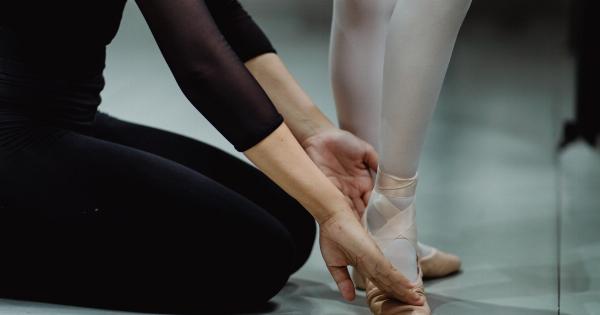Dancing is an enjoyable way to get moving and stay active, but did you know that it can also help prevent heart disease? Studies have found that dancing can provide several health benefits that can improve heart health and reduce the risk of heart disease. Read on to learn more about the health benefits of dancing and how it can help prevent heart disease.
1. Improves Cardiovascular Health
Dancing is a form of exercise that can get your heart pumping and improve cardiovascular health. It can help increase your heart rate, strengthen your heart muscles, and improve circulation throughout the body.
According to a study published in the Journal of Epidemiology and Community Health, regular dancing can reduce the risk of cardiovascular disease by 46% in middle-aged and elderly individuals.
2. Reduces Blood Pressure
Dancing regularly can also help lower blood pressure and reduce the risk of hypertension.
A study published in the Journal of Exercise Rehabilitation found that participants who regularly danced for 60 minutes three times per week experienced significant reductions in both systolic and diastolic blood pressure.
3. Promotes Weight Loss
Dancing is a great way to burn calories and promote weight loss. According to the American Council on Exercise, a 150-pound person can burn approximately 240 calories in 30 minutes of moderate-intensity dancing.
Losing excess weight can help reduce the risk of heart disease by lowering blood pressure, cholesterol levels, and improving overall cardiovascular health.
4. Improves Cholesterol Levels
Dancing can also help improve cholesterol levels and reduce the risk of heart disease.
A study published in the Scandinavian Journal of Medicine and Science in Sports found that participants who danced regularly for 12 weeks experienced significant improvements in HDL-cholesterol levels, also known as “good” cholesterol.
5. Reduces Stress and Anxiety
Dancing is a fun and social activity that can help reduce stress and anxiety.
According to a study published in the Journal of Applied Gerontology, older adults who participated in ballroom dancing classes experienced significant reductions in anxiety and depression symptoms compared to those who did not participate in the classes.
6. Improves Balance and Coordination
Dancing can also help improve balance and coordination, which can be beneficial for older adults who are at risk of falls.
A study published in the Journal of aging and Physical Activity found that older adults who participated in a six-month dance program experienced significant improvements in balance and mobility compared to those who did not participate in the program.
7. Enhances Mental Health
Dancing is also beneficial for mental health and can improve mood and cognitive function. A study published in the Frontiers in Aging Neuroscience found that dancing can help improve brain function and cognitive processing speed in older adults.
Additionally, dancing can provide a sense of accomplishment and boost self-esteem, which can be beneficial for overall mental well-being.
8. Lowers the Risk of Diabetes
Dancing can also help lower the risk of type 2 diabetes, which is a risk factor for heart disease.
According to a study published in the Journal of Diabetes Science and Technology, regular dancing can significantly improve glucose metabolism and insulin sensitivity in individuals with type 2 diabetes.
9. Improves Lung Function
Dancing can improve lung function and increase oxygen flow to the body, which can be beneficial for individuals with respiratory conditions such as asthma.
A study published in the Journal of Cardiopulmonary Rehabilitation and Prevention found that a 12-week dance program significantly improved lung function in individuals with chronic obstructive pulmonary disease (COPD).
10. Increases Social Connection
Dancing is a social activity that can help increase social connection and reduce feelings of loneliness and isolation, which can be detrimental to heart health.
According to a study published in the American Journal of Preventive Medicine, individuals who participate in group-based exercise programs such as dance classes are more likely to adhere to the program and experience long-term benefits compared to those who exercise alone.
Overall, dancing is a fun and effective way to promote heart health and reduce the risk of heart disease.
By improving cardiovascular health, reducing blood pressure, promoting weight loss, improving cholesterol levels, reducing stress and anxiety, improving balance and coordination, enhancing mental health, lowering the risk of diabetes, improving lung function, and increasing social connection, dancing provides a wide range of health benefits that can improve overall well-being.




























